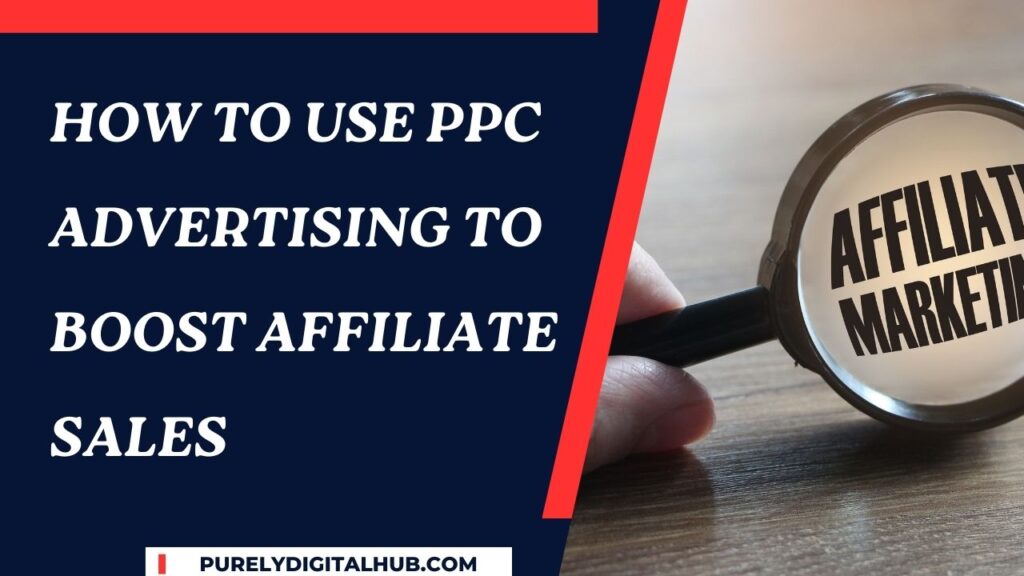Pay-Per-Click (PPC) advertising is a powerful tool for affiliate marketers looking to drive targeted traffic, generate leads, and increase sales. When implemented strategically, PPC campaigns can significantly boost affiliate revenue while maintaining a positive return on investment (ROI). This guide provides actionable steps on how to effectively use PPC advertising to enhance your affiliate sales.
1. Understand the Basics of PPC Advertising
PPC is an online advertising model where you pay a fee each time someone clicks on your ad. Popular PPC platforms include Google Ads, Microsoft Advertising, and social media channels like Facebook, Instagram, and LinkedIn.
Key PPC elements include:
- Keywords: The search terms your audience uses to find products or services.
- Ad Copy: The text or visual content that encourages users to click.
- Landing Pages: The destination where users land after clicking your ad, often optimized for conversions.
2. Choose the Right PPC Platform
Selecting the right platform depends on your target audience and the products you’re promoting. Common platforms and their strengths include:
- Google Ads: Ideal for high-intent searches.
- Facebook Ads: Best for reaching specific demographics and interest groups.
- Bing Ads: Lower competition and cost for certain niches.
- Instagram Ads: Excellent for visually appealing products.
Research where your audience spends time and test campaigns on those platforms.
3. Perform Keyword Research for Affiliate Products
Effective keyword research ensures your ads appear for the right searches. Use tools like Google Keyword Planner, SEMrush, or Ubersuggest to identify:
- High-Intent Keywords: Phrases like “buy,” “best,” or “review” often indicate purchase intent.
- Long-Tail Keywords: Specific, lower-competition keywords with higher conversion rates.
- Negative Keywords: Terms to exclude from your campaign to avoid irrelevant clicks.
If you’re an MSP looking to enhance your digital strategy, check out this comprehensive guide on msp seo to improve your visibility and rankings.
| Keyword Type | Example |
|---|---|
| High-Intent | “Best laptops for gaming” |
| Long-Tail | “Affordable vegan protein powder” |
| Negative | “Free download” (to exclude non-buyers) |
4. Craft Compelling Ad Copy
Your ad copy must grab attention and motivate users to click. Best practices include:
- Highlight Benefits: Emphasize how the product solves a problem.
- Include a Call-to-Action (CTA): Phrases like “Shop Now” or “Learn More.”
- Use Numbers: Highlight discounts or ratings (e.g., “Save 30%” or “Rated 4.8/5”).
- Align with Search Intent: Match your copy to the keywords you’re targeting.
5. Optimize Landing Pages for Conversions
The success of your PPC campaign depends heavily on the quality of your landing pages. Key elements include:
- Relevance: Ensure the page matches the ad’s promise.
- Clarity: Use concise headlines and easy-to-read content.
- Strong CTAs: Guide users toward taking action (e.g., “Buy Now” or “Sign Up”).
- Mobile Optimization: Ensure the page is mobile-friendly.
6. Monitor and Optimize Campaign Performance
Regularly analyze your campaign metrics to identify areas for improvement. Important PPC metrics include:
- Click-Through Rate (CTR): Measures ad effectiveness.
- Cost Per Click (CPC): Tracks how much you’re paying per click.
- Conversion Rate: Indicates the percentage of clicks that result in sales.
- Quality Score: A Google Ads metric that affects ad rankings and CPC.
Use A/B testing to optimize ad copy, visuals, and landing pages for better performance.
7. Leverage Retargeting to Re-Engage Users
Retargeting allows you to reach users who have previously visited your site but didn’t convert. Retargeting strategies include:
- Dynamic Retargeting: Display ads showcasing products users viewed.
- Email Retargeting: Send personalized emails to re-engage potential buyers.
- Social Media Retargeting: Use platforms like Facebook or Instagram to remind users about products.
8. Ensure Compliance with Affiliate Program Policies
Many affiliate programs have specific rules for PPC advertising. Check guidelines for:
- Bidding on brand keywords.
- Direct linking to affiliate offers.
- Disclosing affiliate relationships in ads.
Failing to comply can result in penalties or removal from the program.
9. Calculate and Track ROI
Regularly measure the profitability of your PPC campaigns. Use this formula to calculate ROI:
For example, if you spend $500 on ads and earn $1,000 in affiliate commissions, your ROI is:
Conclusion
PPC advertising can significantly boost affiliate sales when executed with a well-researched and optimized strategy. By choosing the right platform, targeting high-intent keywords, crafting compelling ads, and continuously monitoring performance, you can maximize your ROI and grow your affiliate income. Start small, test different approaches, and scale successful campaigns for sustainable growth.
